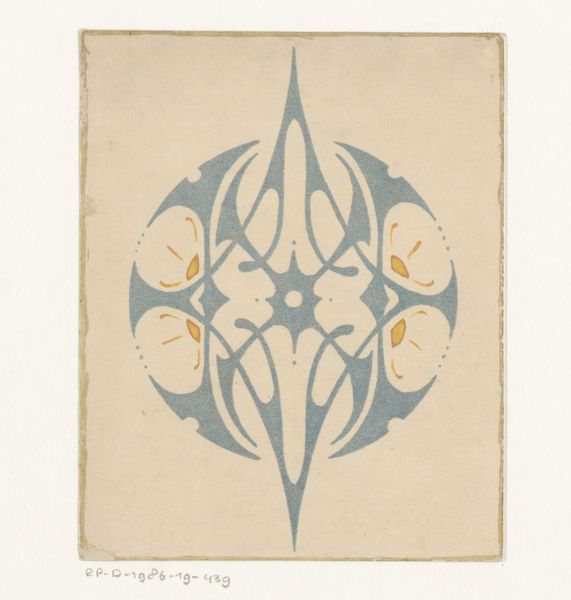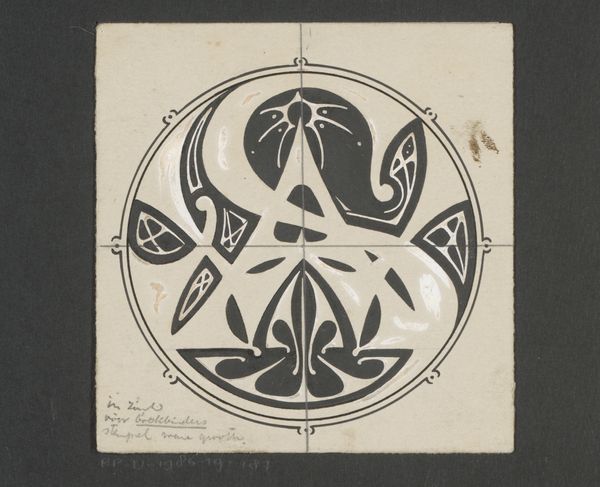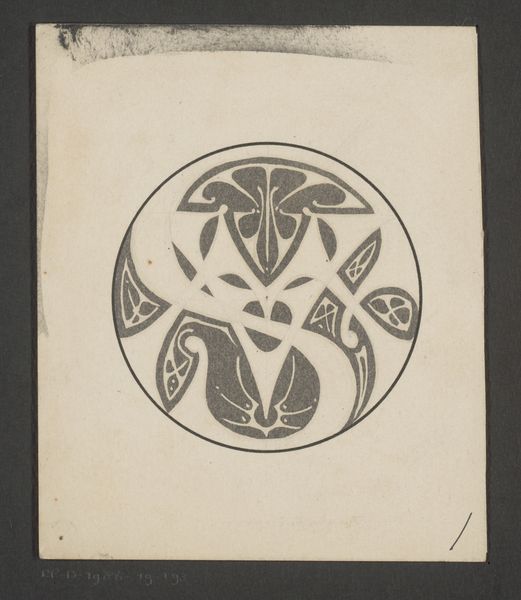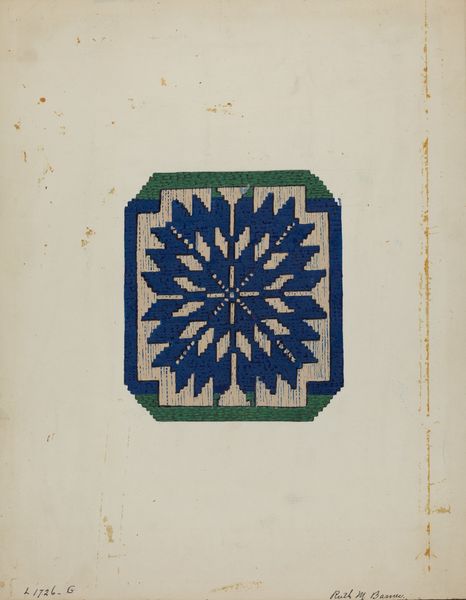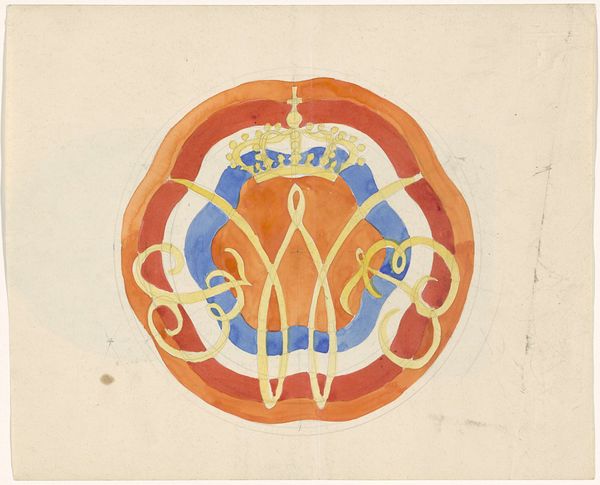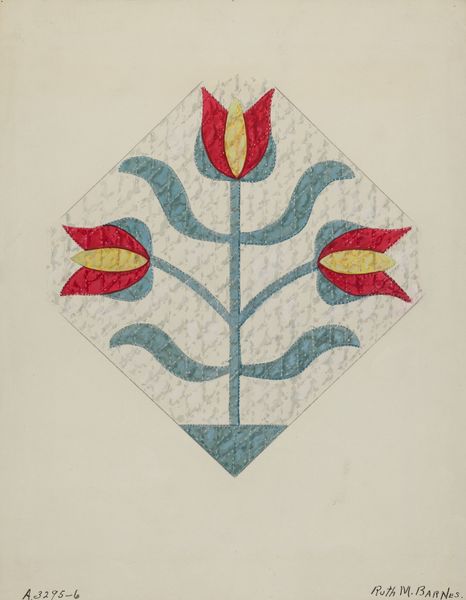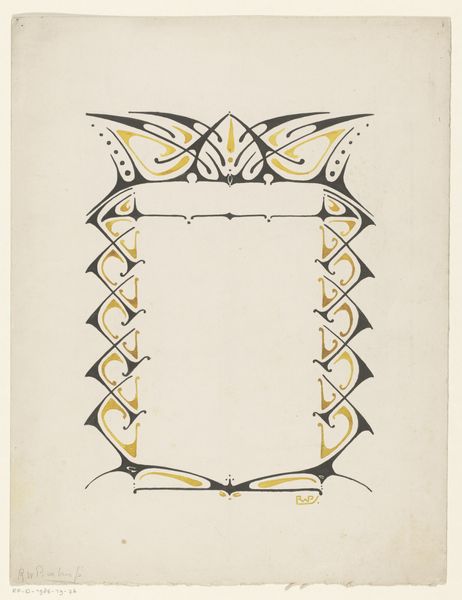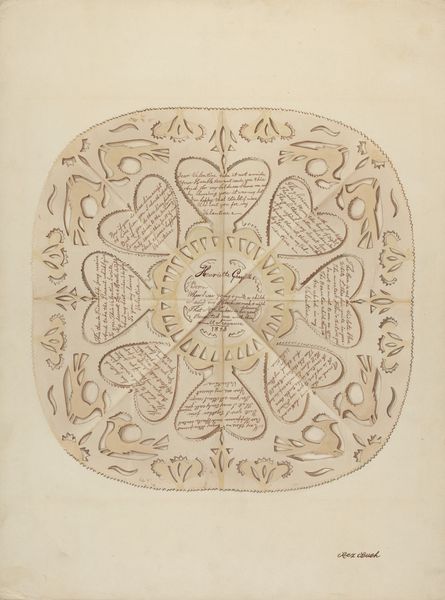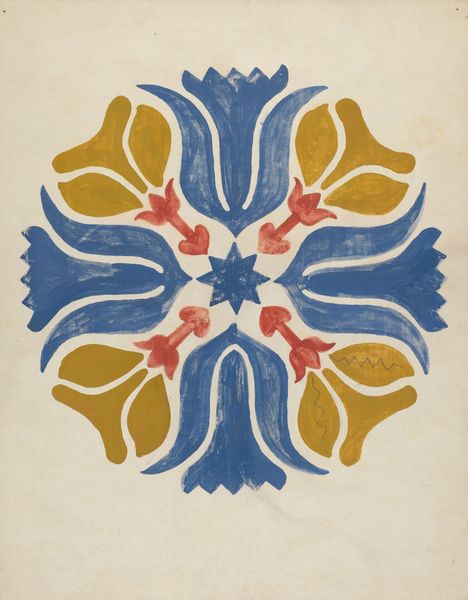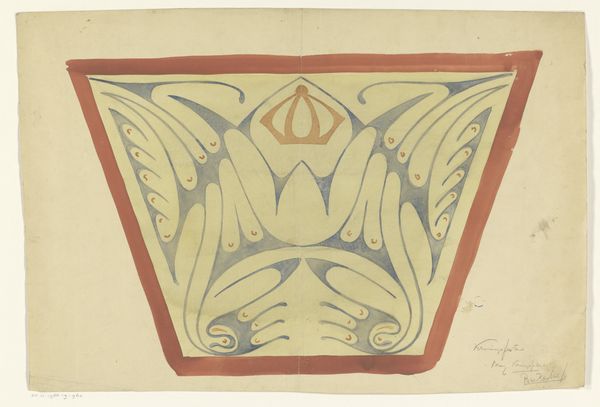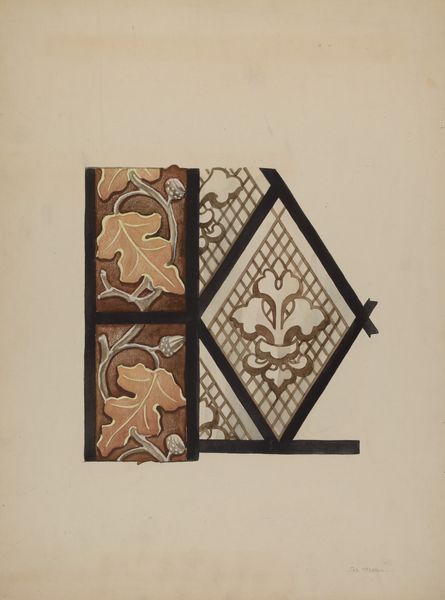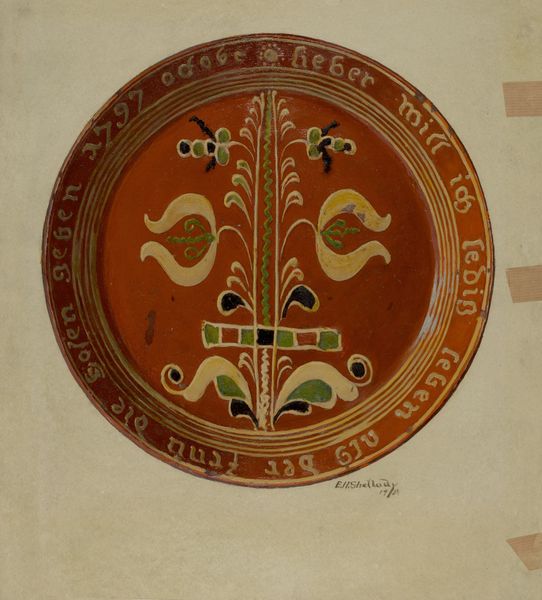
drawing, painting, watercolor
#
drawing
#
water colours
#
muted colour palette
#
painting
#
watercolor
#
tile art
#
geometric
#
geometric-abstraction
#
decorative-art
#
modernism
#
watercolor
Dimensions: overall: 27.9 x 22.9 cm (11 x 9 in.) Original IAD Object: 6" square
Copyright: National Gallery of Art: CC0 1.0
Curator: Welcome. Today, we’re looking at a watercolor titled "Floor Tile" created around 1936. The artist is Walter W. Jennings. Editor: My immediate impression is that it’s surprisingly calming. There’s something very stable about those balanced geometric forms, a comforting visual rhythm. It feels simultaneously modern and antique, in a strange way. Curator: It’s interesting you say that. Geometric patterns like this have echoed through centuries, appearing in mosaics from ancient Rome and resurfacing during the Arts and Crafts movement, and even Art Deco periods. Here, we see a conscious invocation of tradition reinterpreted for the Machine Age. Editor: Yes, I see that lineage. But beyond its decorative appeal, what social currents might have influenced a piece like this, crafted in the late 1930s? Was it meant for mass production or bespoke spaces? The repetitive design and palette make me think about modernist social housing and streamlined interiors. Curator: Indeed. These types of designs found a voice as an expression of forward-thinking sensibilities. You might read into its design aspirations for equality through well-considered design. I notice the palmette motif at the center in blues, creams, and earth tones: this has long stood for regeneration, renewal, and even paradise. It suggests resilience amidst socio-economic upheaval. Editor: I agree. This also points to a potential commentary about accessibility and ownership within art and the domestic sphere. And perhaps speaks about cultural memory embedded in even the humblest spaces. How might Jennings have perceived these symbolic patterns and their role in reinforcing a desired narrative or shared history? Curator: The palmette has, across cultures, represented a desire for ascension, even spiritual perfection. By incorporating that motif into a floor tile design, Jennings seems to invite us to meditate, quite literally, on our daily existence. Every step then carries this weight of historical ambition. Editor: So, the work speaks not just about visual aesthetics but also the potential embedded in mass produced design, connecting with both everyday experiences and much bigger historical movements. It’s kind of profound for a floor tile! Curator: Precisely. A reminder that the mundane can be imbued with rich history, meaning, and social consciousness. Editor: A beautifully layered perspective shift for something you might just walk over.
Comments
No comments
Be the first to comment and join the conversation on the ultimate creative platform.
